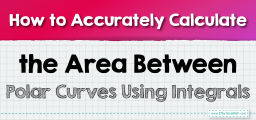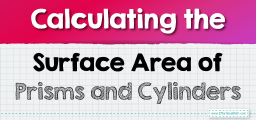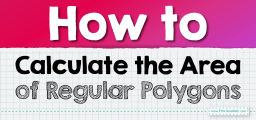Areas Formed by Function Contours
Finding the area between curves involves calculating the integral of the difference between two functions over a specified interval. This method determines the region’s total size bounded by the curves. It’s widely used in various fields for practical applications, such as determining land areas in geography, material quantities in engineering, and economic surplus in finance, offering a versatile tool for spatial analysis.
[include_netrun_products_block from-products="product/6-south-carolina-sc-ready-grade-3-math-practice-tests/" product-list-class="bundle-products float-left" product-item-class="float-left" product-item-image-container-class="p-0 float-left" product-item-image-container-size="col-2" product-item-image-container-custom-style="" product-item-container-size="" product-item-add-to-cart-class="btn-accent btn-purchase-ajax" product-item-button-custom-url="{url}/?ajax-add-to-cart={id}" product-item-button-custom-url-if-not-salable="{productUrl} product-item-container-class="" product-item-element-order="image,title,purchase,price" product-item-title-size="" product-item-title-wrapper-size="col-10" product-item-title-tag="h3" product-item-title-class="mt-0" product-item-title-wrapper-class="float-left pr-0" product-item-price-size="" product-item-purchase-size="" product-item-purchase-wrapper-size="" product-item-price-wrapper-class="pr-0 float-left" product-item-price-wrapper-size="col-10" product-item-read-more-text="" product-item-add-to-cart-text="" product-item-add-to-cart-custom-attribute="title='Purchase this book with single click'" product-item-thumbnail-size="290-380" show-details="false" show-excerpt="false" paginate="false" lazy-load="true"] [include_netrun_products_block from-products="product/6-south-carolina-sc-ready-grade-3-math-practice-tests/" product-list-class="bundle-products float-left" product-item-class="float-left" product-item-image-container-class="p-0 float-left" product-item-image-container-size="col-2" product-item-image-container-custom-style="" product-item-container-size="" product-item-add-to-cart-class="btn-accent btn-purchase-ajax" product-item-button-custom-url="{url}/?ajax-add-to-cart={id}" product-item-button-custom-url-if-not-salable="{productUrl} product-item-container-class="" product-item-element-order="image,title,purchase,price" product-item-title-size="" product-item-title-wrapper-size="col-10" product-item-title-tag="h3" product-item-title-class="mt-0" product-item-title-wrapper-class="float-left pr-0" product-item-price-size="" product-item-purchase-size="" product-item-purchase-wrapper-size="" product-item-price-wrapper-class="pr-0 float-left" product-item-price-wrapper-size="col-10" product-item-read-more-text="" product-item-add-to-cart-text="" product-item-add-to-cart-custom-attribute="title='Purchase this book with single click'" product-item-thumbnail-size="290-380" show-details="false" show-excerpt="false" paginate="false" lazy-load="true"]

To find the area between intersecting curves, we first identify their points of intersection, forming the boundaries of the area to calculate. By integrating the difference between the functions representing these curves over the defined interval, we can accurately determine the size of the area enclosed between them, whether straightforward or irregular in shape.
Calculating the area between curves mathematically involves the following steps:
- Identify the Functions: Let’s have two functions, \( f(x) \) and \( g(x) \), representing the curves.
- Find Intersection Points: Solve \( f(x) = g(x) \) to find the points of intersection. These points will serve as the limits of integration, let’s call them \( a \) and \( b \).
- Set Up the Integral: The area \( A \) between the curves from \( x = a \) to \( x = b \) is given by the integral of the upper function minus the lower function. The integral is set up as:
\( A = \int_{a}^{b} |f(x) – g(x)| \, dx \) - Evaluate the Integral: Calculate the integral. This step might require splitting the integral into multiple parts if the upper and lower functions change over the interval.
- Calculate the Area: The result of the integral gives the total area between the two curves from \( x = a \) to \( x = b \).
The mathematical process essentially sums up the vertical slices of area between the curves, taking the absolute value to ensure the area is counted positively, regardless of which curve is on top.
Here is an example:
Calculate the area between the curve \( y = \sqrt{6x} \) and the x-axis, from \( x = 1 \) to \( x = 5 \).
Step-by-Step Solution:
- Identify the Functions and Interval:
- Upper function: \( y = \sqrt{6x} \)
- Lower function: \( y = 0 \) (x-axis)
- Interval: from \( x = 1 \) to \( x = 5 \)
- Set Up the Integral:
- Since the lower function is the x-axis, the area is simply the integral of the upper function over the interval.
- The integral is: \( \int_{1}^{5} \sqrt{6x} \, dx \)
- Calculate the Integral:
- Find the antiderivative of \( \sqrt{6x} \), which is \( \frac{2}{3} \cdot (6x)^{3/2} \).
- Evaluate this from \( x = 1 \) to \( x = 5 \).
- Calculate the Area:
- Substitute \( x = 5 \) and \( x = 1 \) into the antiderivative and calculate the difference:
\( \frac{2}{3} \cdot 6^{3/2} \cdot 5^{3/2} – \frac{2}{3} \cdot 6^{3/2} \cdot 1^{3/2} \)
The result of this calculation gives the total area between the curve \( y = \sqrt{6x} \) and the x-axis from \( x = 1 \) to \( x = 5 \). The area is approximately \(16.624 \) square units.
Related to This Article
More math articles
- Ease Your Integration: The Partial Fractions Technique
- 8th Grade PACE Math Worksheets: FREE & Printable
- Tri-Fractional Operations: How to Add and Subtract Three Fractions with Different Denominators
- How to Find the Polar Form of Complex Numbers?
- Top 10 Free Websites for CHSPE Math Preparation
- 6th Grade SBAC Math FREE Sample Practice Questions
- Algebra 2 Worksheets: FREE & Printable
- Number Properties Puzzle – Challenge 13
- How to Solve Powers of Products and Quotients? (+FREE Worksheet!)
- Top 10 5th Grade NYSE Math Practice Questions


























What people say about "Areas Formed by Function Contours - Effortless Math: We Help Students Learn to LOVE Mathematics"?
No one replied yet.